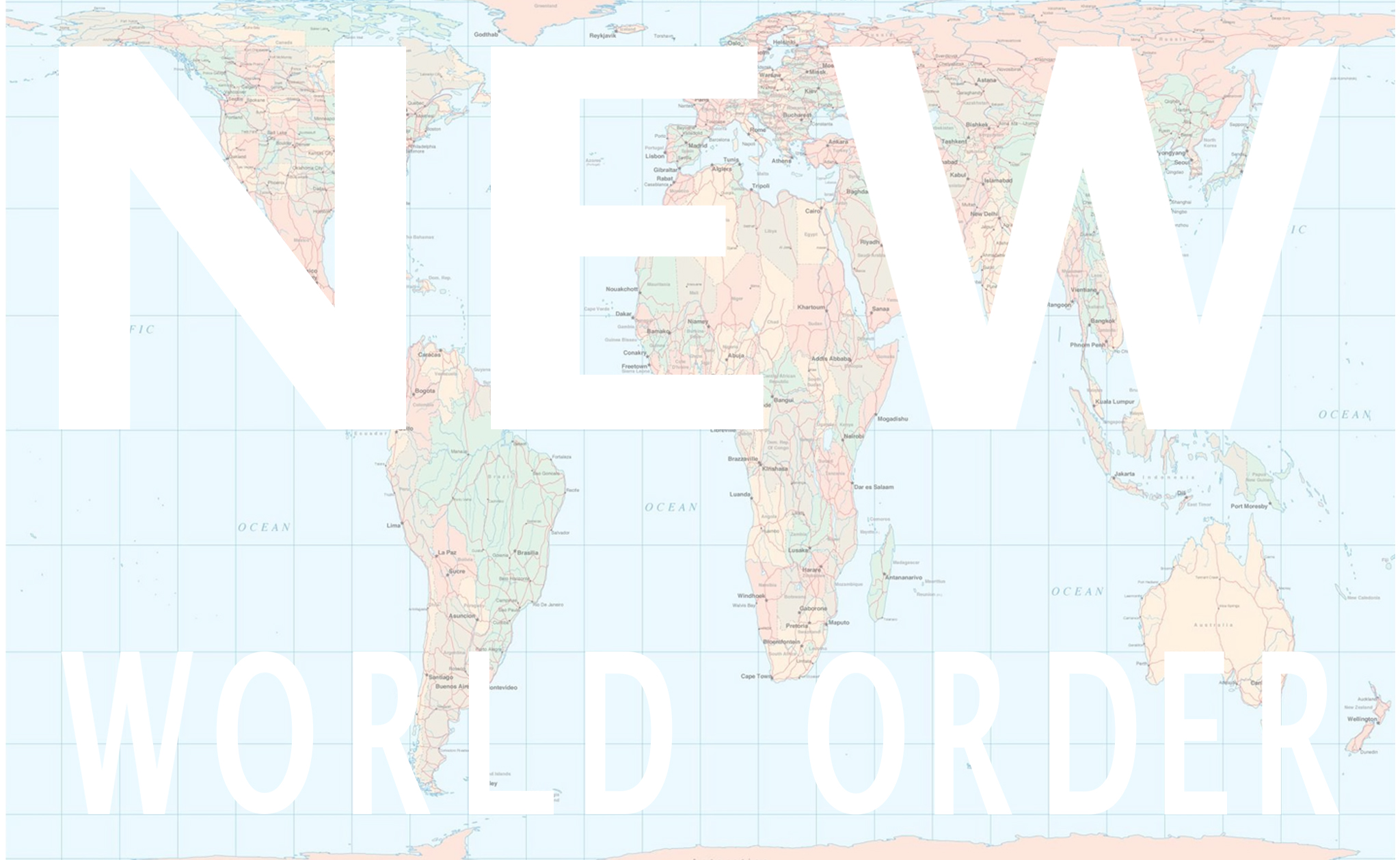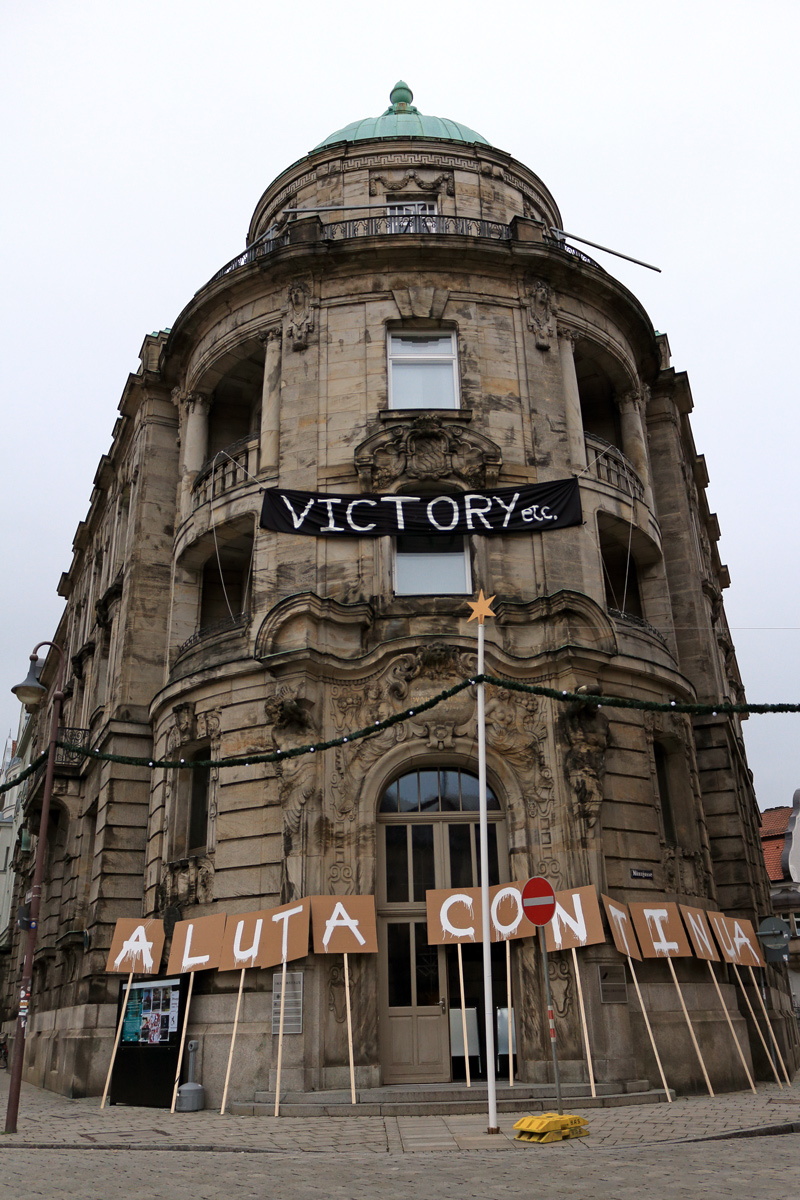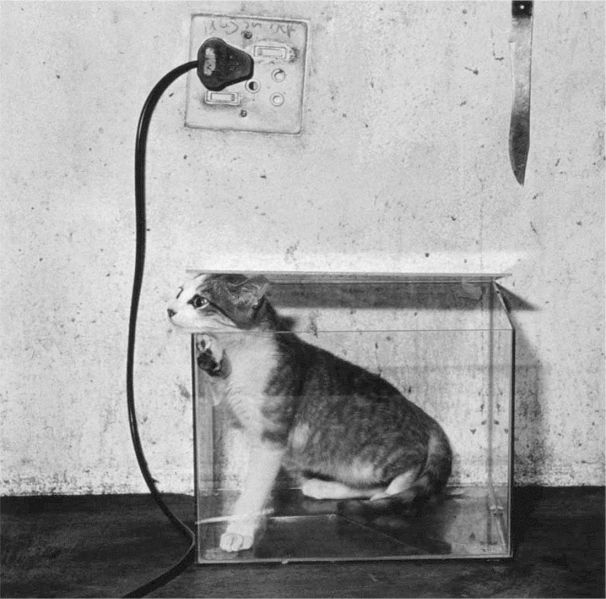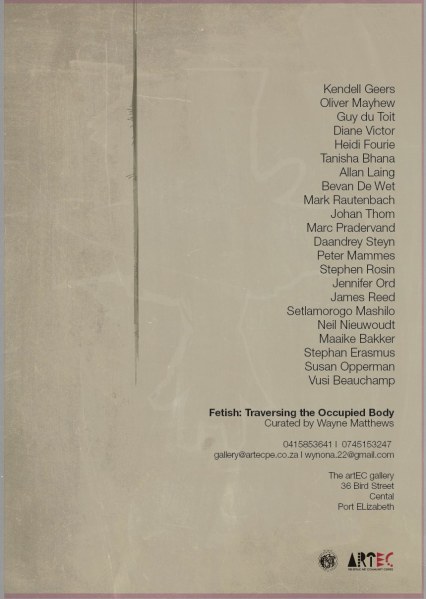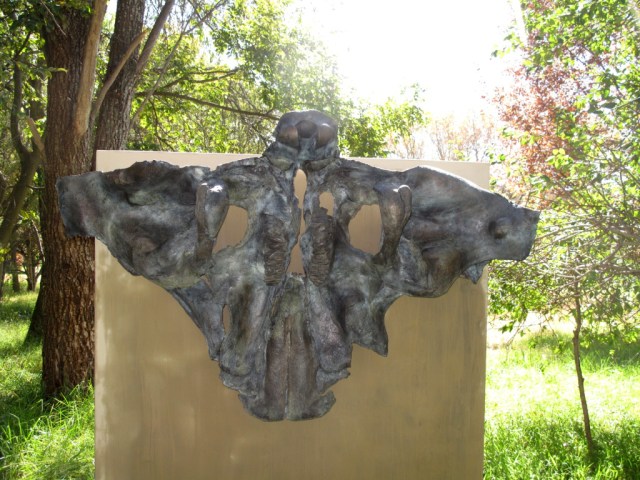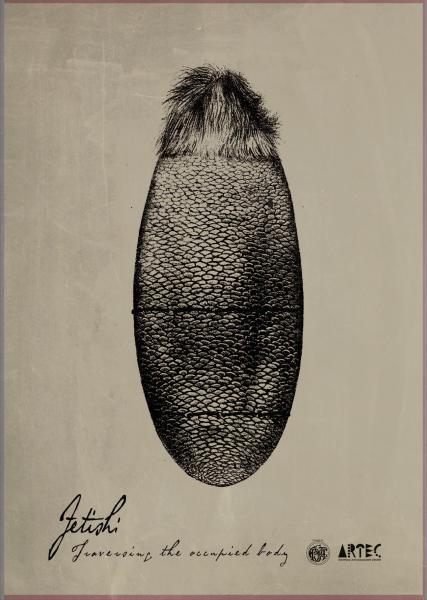
Fetish: Traversing the occupied body.
1. The dark mass inscribed:
“There once was a lady from Ongar”
We approach the rough hued designation ‘Fetish’ with inveterate apprehension. The term marks a disturbed frontier between inside and outside, self and other, an elemental antagonism. Like the object it too is pocked and pitted with our near desires, fears and denials. The “Stereotype [Fetish]… is a form of knowledge and identification that vacillates between what is always in place, already known, and something that must be anxiously repeated (Bhabha in Hook, 2005, p13.),“the correct German word for the vicissitude of [this] idea would be ‘Verleugnung’ [‘disavowal’]’ (Freud, 1927, pp153.). It is through the subtractive synecdoche that the fetish gathers an excess of signification, desire providing the surplus in value and, thus, fantasy fills the anxious abyss between the self and the ‘other’. And yet; “as a power that transfers to beings, objects and agencies, it is universal and diffuse but it crystallizes at strategic points so that its flux can be regulated and diverted by certain groups or individuals for their own benefit” (Baudrillard, 1981, p88.).
2. Colonising fantasies or minding the business of others:
“Who had an affair with a Conger.”
The transference of this agency to the human body and its activities was first described in proto-psychoanalytical terms by Alfred Binet. (1887). Freud’s ‘fetish’, drawing heavily on Binet, functions both by constraining anxiety [through the activity of fantasy/ the anxiously repeated] and breeding anxiety through instability at the level of identification (there is, and, yet is not a phallus). Different objects and associate sets of practices become fetishised; the fetish must, however, be a construct, a fantasy that is frantically reinforced. “(‘I know that mother has not got a phallus, but still . . . [I believe she has got one]; ‘I know that Jews are people like us, but still . . . [there is something in them],)” (Žižek, 2008, pp12). Žižek further elaborates when he proposes that the prevalent Ideological edifice requires the fantasy of the ‘other’, a simple and concrete image to
constrain/fixate the imagination on in order for the image to become a mobilising agency. This valorised parody of our pleasures, the fetish, acts as an obscene bribe that coerces our oppressive and repressive drives into action. Performing a miraculous/fantasmic act of shifting signification, through disavowal, the fetishised makes the unknowable instantly identifiable whilst maintaining and even accentuating difference.
The contemporary commodity fetish acquires its magnified value through an analogous repetitive chant. For Marx the consumer’s ‘needs’ are mobilized within individuals by the strategy of desire and “although the commodity takes the shape of a physical thing, the commodity form” has “absolutely no connection with the physical nature of the article. (Marx in Stallybrass, 2011, pp184). The fetishistic resides in the illusory excess, an ideological agency, and not in any intrinsic value of the ‘thing’. The human body itself is thus codified and commodified, reduced to an abbreviated sequence of values that do not reside in the body itself. “The makeup of beauty, of the erotic body, is a process of marking it, [through the addition of…] jewellery, perfume, ornament, or through cutting it up, the hair, the feet, the buttocks. (1981, pp94, Baudrillard cited in Dant, 1996, pp13). The body is offered up as a series of significatory values which ultimately constitutes the ‘fetishised’ being/object/agency. It becomes clear that our ‘fetish’ oversteps the simple historical limit of the object and our investigation points instead to a metaphoric condensation, a process of inscription; “after all we have a passion for the code.”
3. An occupied snarl.
“They said; how does it feel to sleep with an eel?”
As Bataille re/marks; desire is usually closely linked with terror, intense pleasure and anguish (1998, 53). The fetish as occupying force personifies a narcissistic fantasy that attempts to sublimate the ‘other’ to the self, a volatile ‘value’ freely oscillating between the religious, economic and erotic. Fetishism, thus, is a refusal of difference; and “a perverse structure that perhaps underlies all desire” (Dant, 1996, P10-11). The whole metonymic apparatus marks the colonist as it marks ‘his’ ‘savage’. “It orders the world around the coordinates of fantasy (or magical beliefs) it thus makes possible… to structure and stabilise a world of ideology.” (Pp26, Hook). The ‘semiotic fetish’ points a crooked finger at the anxiety of all
(travellers) explorers, agents of colonies and ideologies, as they meet themselves on the foreign shore of ‘difference’ and fearfully grasps at fantasies with which to fill the abyss between the known and unknown dimensions their own reflection.
4. Deteretorialisation
“Well, she said, just like a man only longer.”
Surely cogitation, and play around the discursive formula of fetishistic disavowal allows us to “come to terms with this surplus (or, more precisely, leftover) means to acknowledge a fundamental deadlock (‘antagonism’), a kernel resisting symbolic integration-dissolution. (Zizek, 2008, pp24) By imitating the libidinal ticks and taking our pleasure sans the horizon of prevalent arch-ideological meanings that they are attached to, we may, as subversives and artists, agitate the seemingly implicit ideological excess and so provide a critique of hegemonic ideology by presenting continuous encounters with that radical other.
Following this artists are invited to submit work, in any medium, that reflect, critique or play around the contemporary and/or historic manifestations of the Fetishistic formulation as a means of resisting this symbolic dissolution/integration.
——————————————————————————————
(((((Let us be careful not to forget that the voice carries through a thin wall or door))))) Sees his faults, his mannerisms, and his appetites laid bare, by his complacent eyes they are reduced in size (((((Just as is: – who can deny it, the shadow towards the midday on the sundial, showing that the stomach can demand its reward;
– By the frost, who can deny it, the standard meter;
– Defying the mud, a rolled up trouser leg; …”
(Roussel. p75, 2011)
References
Bhabha, H. n.d. – The other Question – [Online]. Available at http://courses.washington.edu/…/bhabha_the%20other%20questi… [Accessed 3 January 2015]
Baudrillard, J. 1981. For a critique of the political economy of the sign. USA: Telos press LTD.
Dant, T. 1996. Fetishism and the social value of Objects. Sociological Review, 44 (3) [Online]. Available at http://eprints-test.lancs.ac.uk/33407/1/Fetishism_eprint.pdf
Freud, S. 1927. Fetishism (J. Stranchey, Trans.) The Complete psychological works of Sigmund Freud. (Vol. XXI, pp147-157). London: Hogarth and the Institute of Psychoanalysis.
Hook, D. 2005. – Paradoxes of the other: (Post) colonial racism, radical difference, stereotype as fetish. [Online] Available at http://pins.org.za/pins31/Hook.pdf [Accessed 3 January 2015].
Roussel, R. 2011. New Impressions of Africa. USA: Princeton University Press
Richardson, M. 1998. ed. Georges Bataille: Essential Writings . London: Sage Publications LTD.
Stallybrass, P. 2011. Marx’s coat. [Online]. Available at: http://davidmcnally.org/…/…/Marxs-Coat-peter-stallyBrass.pdf [Accessed 5 January 2015]
Žižek, S. 2008. The sublime object of ideology. London, New York: Verso Publications LTD.




